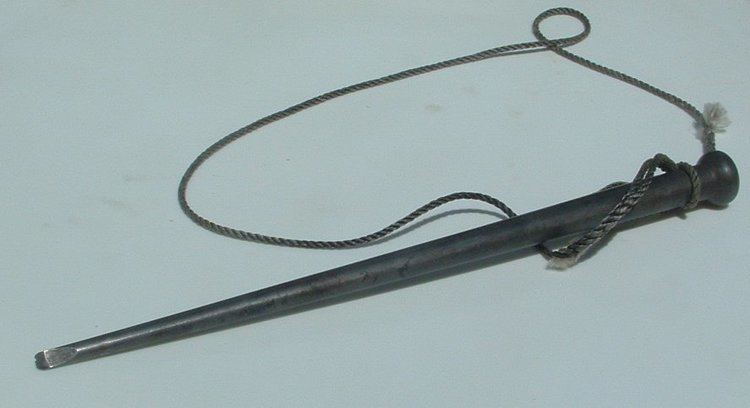 | ||
Marlinspike (/ˈmɑːrlᵻnspaɪk/; sometimes marlin spike, marlinespike, or the archaic marlingspike/marling-spike) is a tool used in marine ropework. Shaped in the form of a polished metal cone tapered to a rounded or flattened point, they aid in such tasks as unlaying rope for splicing, untying knots, drawing marline tight using a marlinspike hitch, and as a toggle joining ropes under tension in a belaying pin splice.
Contents
Most marlinspikes are 6–12 inches (15–30 cm) long, but may reach 2 feet (61 cm) and more for working heavy cables and ropes. They are usually made from iron or steel, whereas fids, similar in shape and function, are formed from wood or bone. The marlinspike may be a separate tool or one item on a pocket knife.
Sailors who become proficient at knot tying, splicing, and sewing using the marlinspike are said to have mastered marlinespike seamanship, earning them the right to be known as marlin spikes or marlinspike seamen.
Uses
Marlinspikes are used:
Etymology
Marlinspike derives from the practice of "marling", winding small diameter twine called marline around larger ropes to form protective whippings. The long-billed fish marlin is named after the marlinspike.
